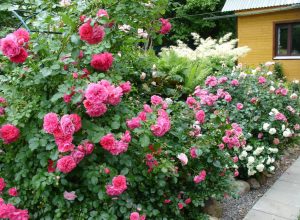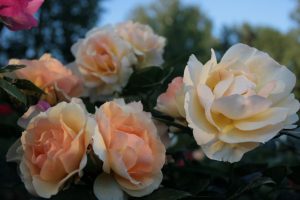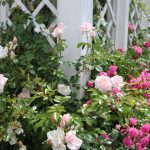Often, forums on the Internet are asked: “Help me choose a rose for my…”. Many rose lovers with some personal experience willingly and sincerely respond to this call. But there are so many tips that the following request is logical: “Help me choose the best option from all the offers”. of
course, it is always useful to take into account someone else’s experience and professional knowledge, but you will have to make the final choice yourself. Sometimes a random selection of colors leads to luck, but you can’t rely on chance alone.
ABC of color
How to find the key to color harmony? You need to know the alphabet of color, it includes six colors with different “temperatures”. Red, orange, and yellow are warm colors, while green, blue, and purple are cold colors.
The classic color circle will help you navigate the space of continuous color transitions. The sectors of the circle are colored in different color tones, arranged in the order of spectral colors. Three primary colors (red, yellow, and blue) make up the primary triad, and when they are mixed, they get a secondary triad (orange, green, and purple).

Pure and rich tones lie around the perimeter of the circle, towards the center the color saturation decreases, and it approaches shades of gray. The colors flow smoothly from one to the other in a circle and are harmoniously interconnected.
How do I distinguish color diversity within a single sector?
The international register, where new varieties of roses are registered, offers a rather boring list of flowers, in which each new variety must find its niche. To ease our torment, the catalogues describe the varieties in more detail and illustrate them with pictures. Sometimes comparisons are used that allow the Amateur to specify the color — for example, the color of red currant or apricot, cherry or raspberry. In some cases, comparisons even go into poetry, for example, the color of the beautiful rose ‘Chartreuse de Parme’ (Delbard, 1996) reminded the originators of the color of “Mature amethyst”.
In the case of red roses, you should not trust the description or even the pictures. This is the most difficult color to interpret, it is best to see a live flowering plant. It is often not enough to know that the rose you choose has a red color, even detailing this classification will not help much. Red roses are a great variety, we distinguish them by brightness (purity of color) and different shades of different saturation.
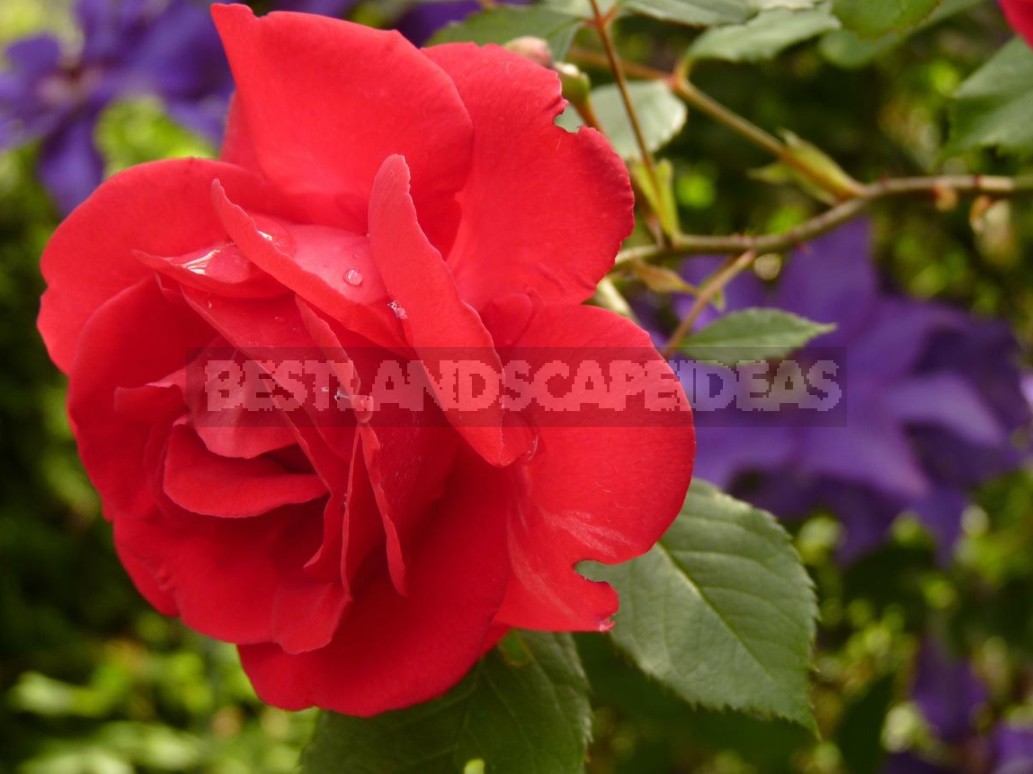
Determine which part of the spectrum is your favorite color, and you will understand which — warm or cold — compositions convey your mood. It is not necessary in all cases to be guided by the principles of maximalism: only cold or only warm garden. In addition, the color of live flowers is unstable, and some roses change their “temperature” during the flowering period.
Color schemes: what they are and what they are
There are known combinations of colors that are called color schemes:
- solid color scheme: use the same color tone, but with different saturation and brightness values;
- analog scheme: use two colors that are next to each other, one of them usually dominates;
- Contrast scheme: colors are placed opposite, one color is dominant, and the other is used for emphasis;
- Triad: three colors are used, equidistant on the color wheel (along the triangle).
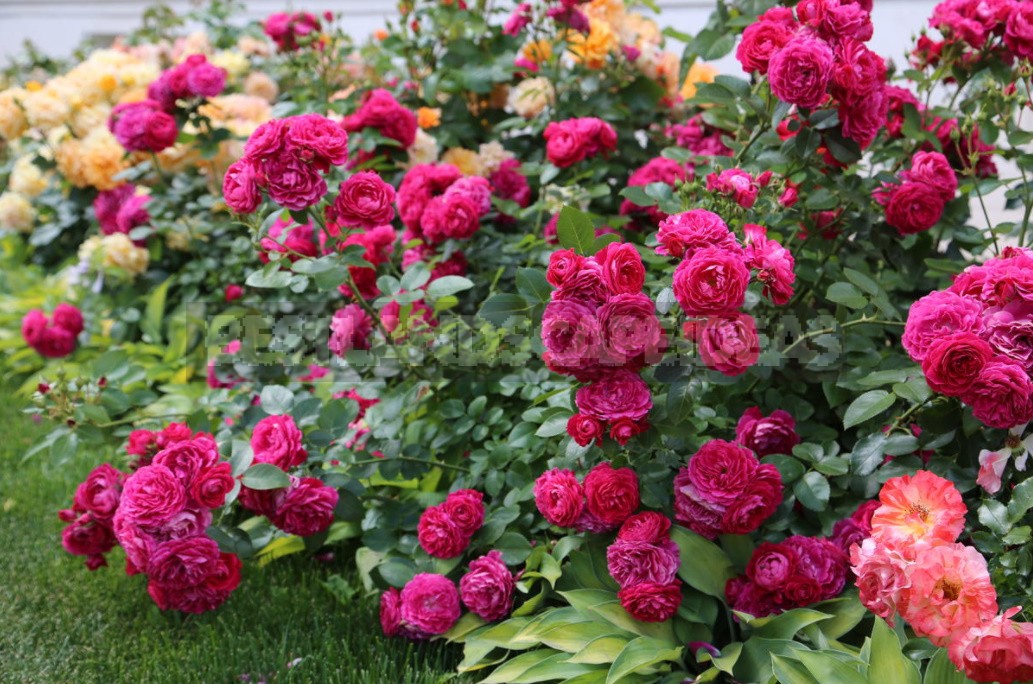
You can find other tips, but in the end, when considering all the known color combinations, you will have to reduce your choice to harmony or contrast. Do not be afraid to combine, sometimes the same combinations can achieve different effects depending on the ratio of colors in the composition, the order of their alternation, as well as the size and shape of the color spot.
The size and shape of color spots plays a very important role. Avoid pronounced geometric shapes, you need to strive for the impression that the colors “flow”. Try to see what the roses look like in the garden of friends, visit the Botanical gardens, if possible – European public rose gardens. Enjoy the magic of colors in the paintings of artists, but take from all this only what suits your feelings, your temperament. Remember that direct copying of other people’s ideas often leads to parody.
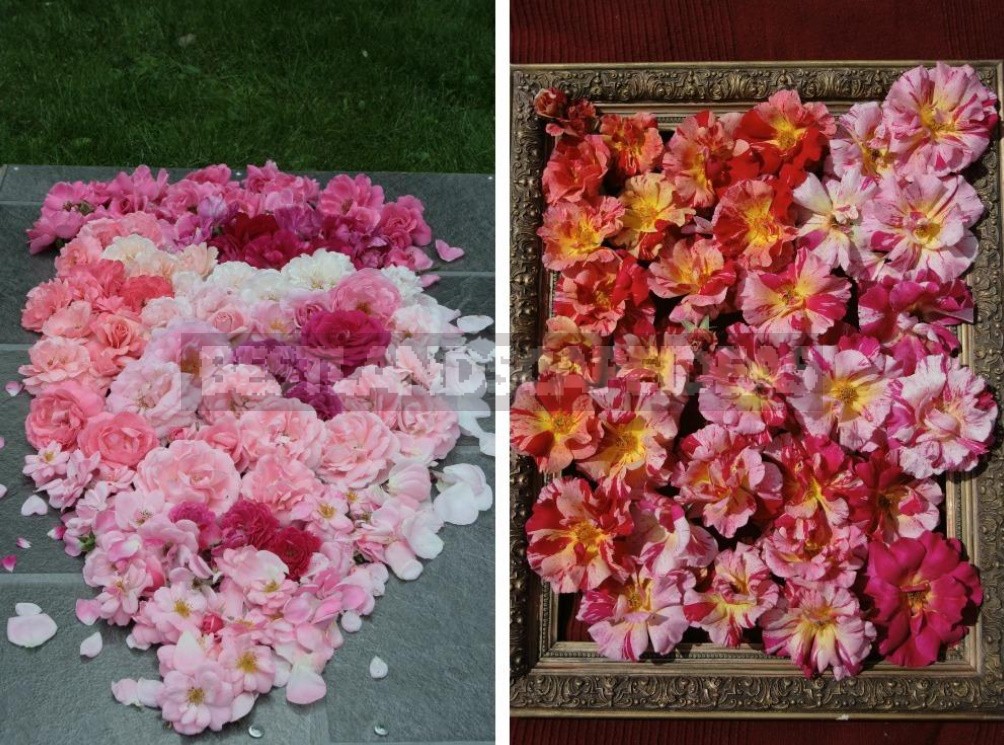
In search of harmony, you can arrange rose petals (or other flowers) on the table or directly on the lawn, this helps to avoid mistakes when choosing roses. A test for color compatibility can be considered a bouquet (especially in the case of monochrome colors) or several small bouquets. The eye will catch the harmony, and bouquets will help you distribute color blocks or choose the dominant color.
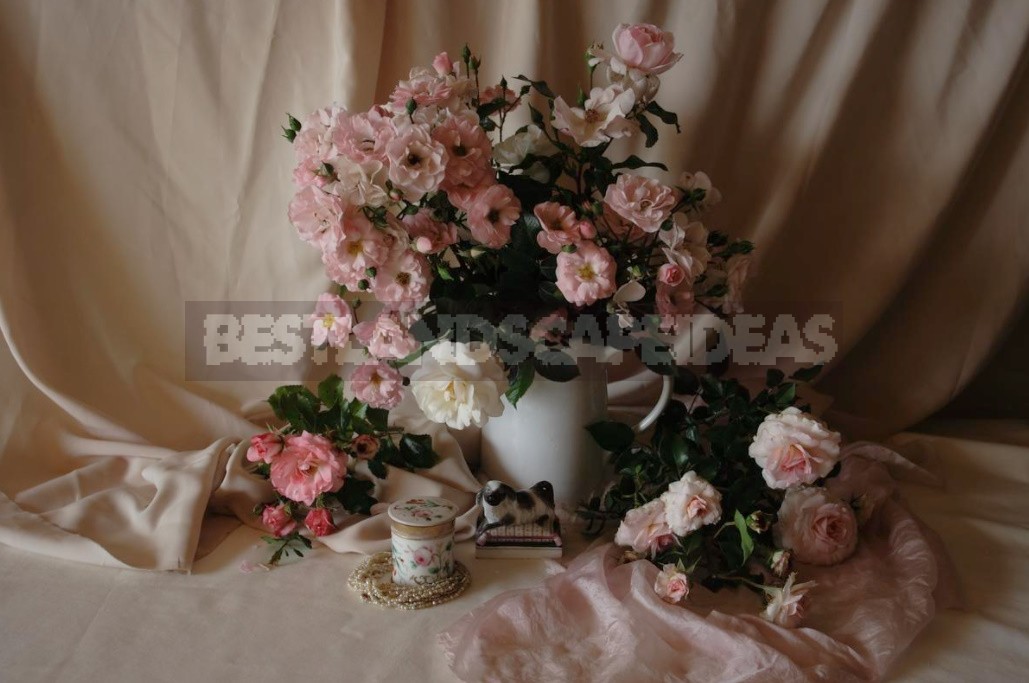
In the color scheme of large plantings, sometimes you have to lay out whole blocks of flowers (of course, not in full size, but on a certain scale). The most successful choice of roses will be in the nursery during the mass flowering period.
We will take a closer look at some typical schemes in the second part of this article!

